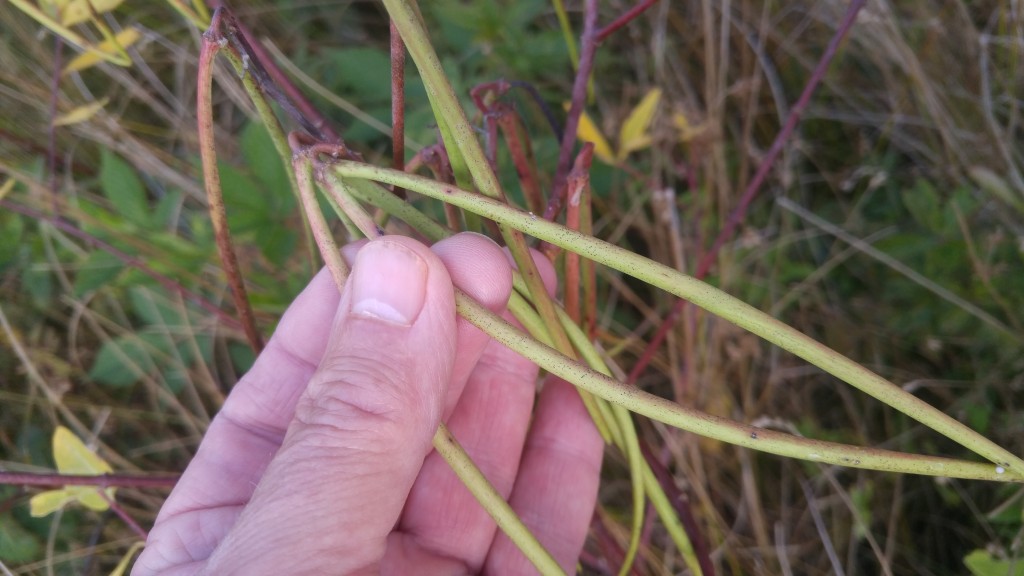When I was aroud ten years old, back when all kids were free-range, I spotted spotted a plant during my wanderings that impressed me so much that I’m intrigued by it to this day. I didn’t know what it was called at the time. It wasn’t until later, when I was in college, that I found out it was called dogbane.
What caught my eye way back then, were the long, thin seed pods. They were hanging from the plant in two’s, connected to each other at the top. What looked weird to me was the fact they weren’t attached like two green beans. They appeared to be one pod that grew into two parts, separating at the top. I’d never seen anything like that before in my young life.
I’m not sure if dogbane was ever that hard to find but I have noticed however, in the past twenty years, more and more dogbane growing all over our area. That’s probably due to more people leaving space for wild plants to grow for butteries, pollinators and other wildlife
A few years back someone brought me a part of the plant that they had collected asking what the plant was. Recognizing it immediately, I said without hesitating “that’s dogbane”. They looked at me like I was BS-ing them, like I made the name up. I could tell they didn’t believe me when they took their plant and just walked away. The next day they told me they had done research on their own and discovered that indeed the was a plant called dogbane and that yes, their plant really was dogbane.
There’s a spot on my property that I cultivated as a vegetable garden for a few years. I decided it wasn’t a good garden spot so I let it go back wild. Lots of different plants moved in including a single dogbane. That one plant has since expanded into a fairly dense stand. Right now the stand is turning a beautiful gold color.
On farms, dogbane can develop into a fairly serious weed. Since it reproduces by seed and by underground rhizomes is can form stands that out-compete field crops. In most cases farmers keep it under control by herbicides or crop rotation.
Bob
